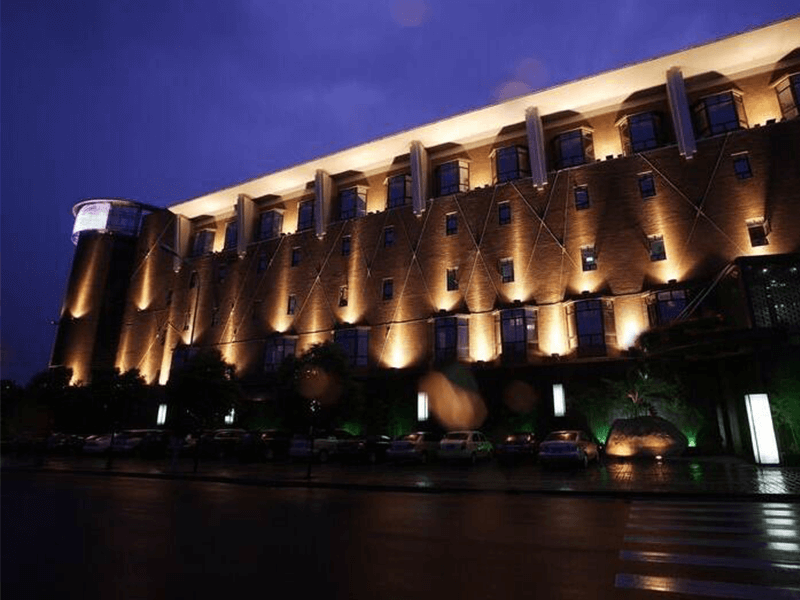Floodlights are powerful, high-intensity lighting fixtures designed to provide widespread and intense illumination over large areas, making them an excellent choice for illuminating vast facades, walls, or outdoor areas.
One can achieve stunning lighting effects by strategically positioning floodlights from various angles or employing multiple fixtures. For instance, uplifting a tall structure with floodlights can create a captivating silhouette against the night sky. Likewise, cross-lighting from opposite sides can accentuate textures and bring out the three-dimensional aspects of the facade, adding depth and visual intrigue to the architecture.
Let’s delve deeper into the key characteristics and uses of floodlights:
Intense Illumination: Floodlights are engineered to produce a broad beam of low light, ensuring uniform and comprehensive coverage. This makes them ideal for illuminating large outdoor spaces, sports fields, construction sites, and event venues where high brightness levels are essential.
Outdoor Security: Floodlights are widely used for outdoor security purposes. Their intense illumination is a deterrent to potential intruders or trespassers, enhancing safety and security for homes, commercial properties, parking lots, and public areas.
Sports Lighting: Floodlights are critical in sports lighting, enabling evening and nighttime games and events. Stadiums and sports arenas use floodlights to ensure optimal visibility for athletes and spectators alike, extending the hours available for sporting activities.
Construction Sites: Floodlights are invaluable on construction sites, where work often continues after dark. These lights enhance safety by providing well-lit work areas, minimizing the risk of accidents, and improving productivity during evening shifts.
Emergency Lighting: Floodlights are essential for power outages or natural disasters. Their powerful beams ensure clear visibility and safety during critical situations.
Outdoor Events and Festivals: Floodlights are a staple in outdoor events and festivals, providing brilliant lighting for concerts, stage performances, and other outdoor gatherings. They create a vibrant and captivating atmosphere for attendees.
Architectural Lighting: Floodlights are frequently used for architectural lighting to highlight and accentuate the facades of buildings, monuments, and landmarks. These lights add drama and visual appeal to structures, especially during nighttime.
Film and Video Production: Floodlights are integral to film and video production in the entertainment industry, ensuring well-illuminated indoor and outdoor shooting locations.
Horticulture: In horticulture, floodlights are used for plant growth and propagation in greenhouses and indoor gardens. The intense light aids in stimulating photosynthesis and promoting healthy plant growth.
Temporary Lighting Solutions: Floodlights are a convenient and portable lighting option for transient events, construction projects, and emergency response situations.
LED Advancements: With advancements in LED technology, floodlights have become even more energy-efficient and environmentally friendly. LED floodlights offer significant energy savings, reduced maintenance costs, and extended operational lifespans compared to traditional floodlights.
